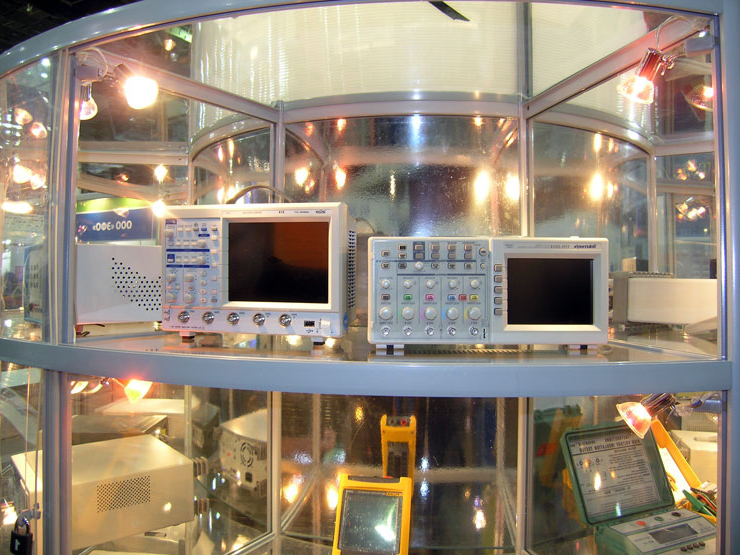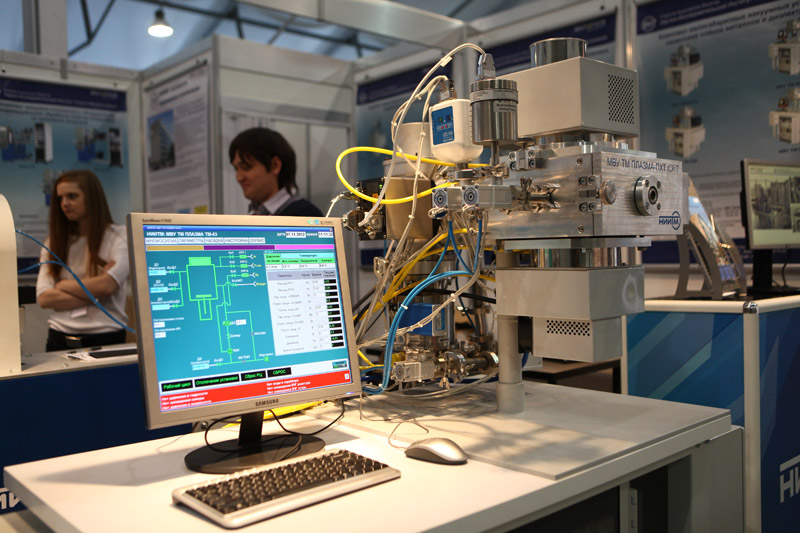Instrumentation in electronics, optoelectronics and photonics
Head of the Laboratory - Karimov Abdulaziz Vakhitovich - Doctor of Physical and Mathematical Sciences, Professor.
The laboratory was organized in 2018, at the Physical-Technical Institute of the Uzbekistan Academy of Sciences.
The following independent groups operate in the laboratory with their scientific and technical projects:
I. The first group – A.V. Karimov,
II. The second group – D. M. Yodgorova
III. The third group – F. A. Giyasova
IV. The fourth group under the leadership – O. A. Abdulkhaev
V. The fifth group under the leadership – R. R. Kobulov
In the laboratory staff there are: one professor, two doctors of sciences, two candidates of sciences, two doctors of philosophy, two Ph.D. doctorants and research staff (7) and engineering - technical staff (3) - a total of 19 employees.
During the period from 2006 to 2016, as the most important results in "Development and creation of semiconductor devices and optoelectronic devices for industry, medicine, computer science, communications, etc." are the following:
- The technology of obtaining epitaxial layers of gallium arsenide compounds from the liquid phase has been developed, and methods and devices for liquid epitaxy have been developed, that make it possible to grow thin films with a textured surface and a microrelief interface. The possibility of using the proposed methods for obtaining solar cells with improved characteristics is shown, in particular, the possibility of increasing the radiation resistance and withstand the multiplicity of solar radiation, as well as increasing the quantum yield by half, compared to structures with a planar surface, is shown.

- A method has been developed for obtaining epitaxial layers, by concentrating mixing of solutions-melts through a capillary hole, which makes it possible to obtain a predetermined gradient of impurity distribution with drift electric fields along the thickness of semiconductor structures, which reduces the dark currents and increases the photosensitivity of diode and transistor structures by one or more orders, in comparison with known methods for obtaining a gradient distribution of impurities.
- A new class of multi-barrier photosensitive structures, possessing internal photoelectric amplification of the primary photocurrent is proposed, starting with low voltages in a wide optical range of 0.4-1.6 μm, low capacitance and low reverse currents, rather than avalanche photodiodes. A feature of these structures is the operability at room temperature in the infrared region of the spectrum and the possibility of receiving weak optical signals, which makes promising their use for receiving and detecting optical signals in fiber optic and telecommunication systems.
- The calculated and analytical study of the drain current-voltage characteristics of a long-channel FET with allowance for the gradient of the distribution of impurities and mobility along the channel thickness is revealed, new modes of its operation and features of its functioning are revealed, which consist in acquiring the properties of a short-channel transistor in these modes. At the same time, a technologically given power gradient of impurities in the channel ensures its operation in an economical mode with low energy consumption, without reducing the functional properties.
- A new approach in selecting the measurement parameter of a field effect transistor, in particular, the channel cut-off voltage, makes it possible to create on its basis multifunction sensors for monitoring useful signals, such as blood pressure, body temperature and various objects, by remote wireless signal transmission with subsequent processing by an external device (remote telemetry).
- For the first time, a technology was developed for obtaining low-voltage voltage limiters by ampoule diffusion from a highly concentrated arsenic source, which provides a small spread of breakdown voltage and low differential resistance, which allowed increasing the power, withstand by 20%, compared to foreign analogs.
- Technological and constructive aspects of manufacturing powerful rectifier-limiting blocking diodes designed to prevent accidental failure of solar module modules, as well as economical electronic circuits of optical switches with remote control, designs of voltage limiter, optical signal modulator, module for protection of electronic equipment (computer, TV etc.), which are protected by the Patents for inventions of the Republic of Uzbekistan: (№. IAP 04059. 2009, №. IAP 03974. 2009, №. IAP 04002. 2009, №. IAP 03 955. 2009, №. IAP 04023. 2010, №. IAP 04244. 2010).

Developed physical and technological bases developing selective, ultra wide band in the visible and near infrared region, the coordinate-sensitive bipolar phototransistors and photodetectors, capable of operation at high radiation levels, corrosive gas environments and high temperatures. Thermostable photodetectors, together with a device for remote gas annealing in industrial boilers, were tested by the state and recommended for wide implementation.
Based on the developed wide-band injection, photodetectors in the visible light region, a spectro-analyzer for the analysis of the chemical composition of metal alloys - A3-FA-0-11242 "Development of a mobile spectro-analyzer for the rapid evaluation of the elemental composition of hard alloys in production" (2012-2014). Development, based on the business agreement №. 1/05, dated 04/05/2012 of the prisoner with the Tashkent Mechanical Plant "Development of a mobile spectroanalyzer for the determination of the chemical composition of metal alloys, using computer technology", was transferred to the "Customer" in 2015.
Based on selective injection photodiodes with internal amplification of photosensitive in the narrow region of the ultraviolet emission spectrum in 2015 -2017. The project "Development of a compact combustion flame control system for boilers with gas burners" has been completed. A combustion flame control system for boilers with gas burners was developed jointly with Gazavtomatika LLC.
Research is being carried out in the field of creating low-cost photocells based on thin-film materials for household appliances under conditions of room lighting and direct solar radiation. On the basis of the studies carried out, homo-, hetero-, and varisonal photoconverters based on amorphous hydrogenated silicon and alloys based on it were developed.
Currently, in conjunction with specialists from the Republican Specialized Center of Surgery, research is being carried out on the use of injection photodiodes with internal photosensitivity enhancement in the green region of the radiation spectrum. The scientific, technical and technological results of the development of the "photoelectric colorimeter" device in the future will be used to develop new types of medical diagnostic equipment for the needs of the institutions of the Ministry of Health of the Republic of Uzbekistan.
